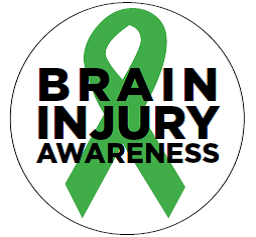By Nora Hazan, Year 12
You might have heard of Mike Webster the NFL superstar or Chris Benoit, the Canadian wrestler. Strangely enough, they have more in common than being athlete icons; they both faced a rapid downward spiral in all aspects of their life before suddenly dying at a very young age.
To better understand their unexpected death, it is important to trace back to the start of their decline. Mike Webster was one of the greatest offensive linemen of all time, a nine time Pro Bowl selection, a nine time All-Pro, he played on four of the Pittsburgh Steelers’ 1970’s Super Bowl winning teams and his picture stands in the Hall of Fame. Iron Mike was a national treasure. That is, before his life starting dramatically declining. On March 11th 1991, Webster retired from his position as a coach for the Kansas City Chiefs. He was only 39. After his retirement, he suffered from amnesia, dementia and acute muscle and bone pain. His personality was completely altered and unrecognizable. He became addicted to medically prescribed drugs, drinking and violent behavior. Before he knew it, the legendary Iron Man was all alone. Divorced from his wife and friendless, Mike Webster died six months later at the early age of 52.
Chris Benoit was considered one of the all time top 5 great wrestlers after numerous promotions including the World Wrestling Federation/World Wrestling Entertainment (WWF/WWE), World Championship Wrestling (WCW), Extreme Championship Wrestling (ECW), and New Japan Pro-Wrestling (NJPW). Benoit’s decline was a little more dramatic than Webster’s. Over a three day period, he murdered his wife, strangled his 7 year old son and hung himself at home. He was only 40.
After their deaths, their brains were carefully analyzed to have a better understanding of what caused their drastic change in personality and what started their downward spiral to madness. Mike Webster was the first athlete to have had a brain autopsy, and it showed an acute case of CTE Chronic Traumatic Encephalopathy (see image at top of the page). CTE comes as a consequence of multiple Traumatic Brain Injuries, more commonly known as TBIs.
TBI aren’t necessarily deadly and they can be caused by various day to day events, such as falling from your bed, a ladder or down the stairs. In the cases of Mike Webster and Chris Benoit, they were caused by sports injuries and blows they received to the head. These injuries occur when the brain crashes against the skull (see image below) and and can lead to bruising, torn tissues and ripped axons. Some of the symptoms include a loss of consciousness (this is not always the case), headaches, nausea or vomiting, fatigue and dizziness. TBIs can also show some mental repercussions after the shock such as difficulty to concentrate or mood swings. Severe cases of TBI can lead to detrimental effects on your personality and health. It increases the risk of a neurological disease such as early onset Alzheimer’s or Parkinson’s, increased bursts of anger, depression and anxiety and can lead to a lack of empathy.
Webster and Benoit were just two cases out of many examples of athletes that faced a subsequent decline in personality and life. From being worldwide renowned superstars, they turned into violent and depressed lonely men. The importance of protecting your head and more specifically your brain can not be underlined enough. In this TBI awareness month of January, when many will be skiing and snowboarding, it is crucial for your health to wear a helmet and to be aware and careful of the dangers of trauma to the head.



